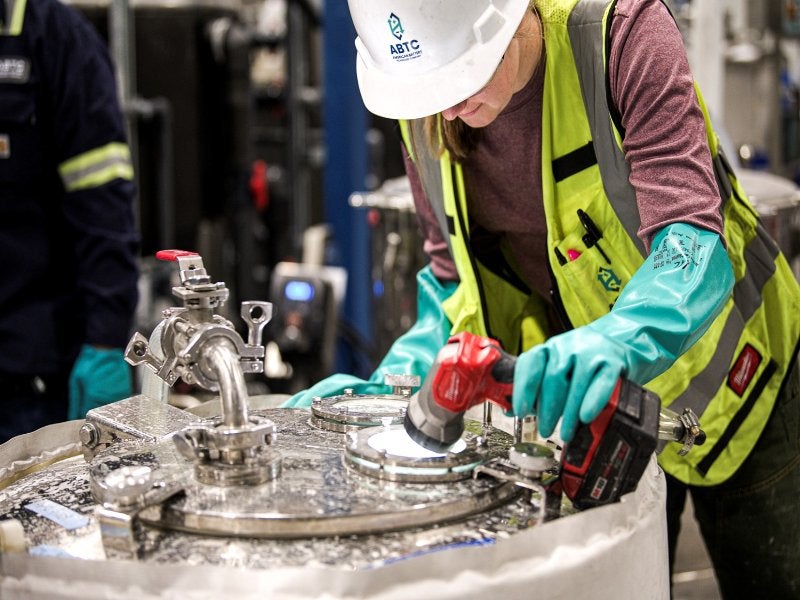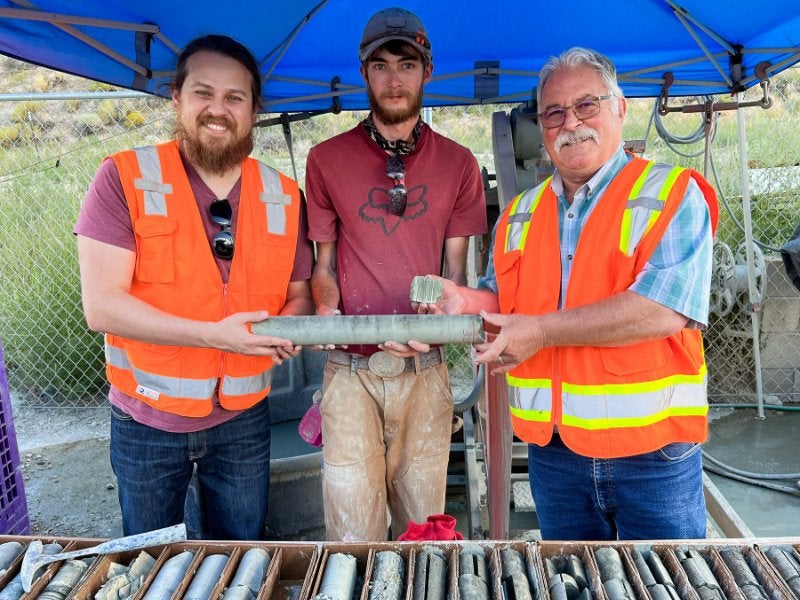The Tonopah Flats Lithium Project in Nevada is one of the largest identified claystone resource deposits in the US. It is being developed by the publicly traded American Battery Technology Company (ABTC).
The company began geological exploration in 2021 and announced an inferred resource in February 2023, followed by initial project assessments.
In June 2025, the US Federal Permitting Council designated Tonopah Flats as a Transparency Priority Project under the FAST-41 Permitting Dashboard. The designation supports coordinated federal approvals for the proposed mine and refinery.
ABTC published a pre-feasibility study (PFS) on the lithium project in October 2025.
The PFS indicated a 45-year life of mine (LoM) based on the development of the southern portion of the property.
The study estimates around $2bn in initial and pre-production capital during the first five years, and $205.6m in additional and sustaining capital over the remaining LoM.
Pilot operations at the site are expected to begin in 2026–27, with the initial phase of commercial production due to begin in 2028.
The project may achieve full capacity in 2030–31, subject to market conditions.
Tonopah Flats project location
The Tonopah Flats Lithium Project is located in the south-eastern portion of the Big Smoky Valley, approximately 11km (around seven miles) north-west of the town of Tonopah, spanning both Esmeralda and Nye counties in Nevada, US.
The property comprises 517 unpatented federal lode mining claims covering around 4,322 hectares (10,680 acres).
Geology and mineralisation
The Tonopah Flats Lithium Project lies within a broad alluvial basin between the San Antonio Mountains to the east and the Monte Cristo Mountains to the west.
The site is covered by mostly quaternary alluvial fan and pediment deposits comprised primarily of locally sourced silt, sand and gravel.
This surficial layer averages less than 15m in thickness and overlies a thick Miocene Siebert Formation sequence comprising fluvial and lacustrine epiclastic claystone, volcanic conglomerate, sandstone, siltstone and tuff.
The sedimentary units across the project area are flat-lying to gently dipping. Lithium mineralisation occurs primarily within the claystone members of the Siebert Formation.
Reserves
The Tonopah Flats property contains proven and probable reserves of 559.85 million tonnes (mt) with an average lithium grade of 805 parts per million, containing 451,000 tonnes of lithium, which is equivalent to 2.73mt of lithium hydroxide monohydrate (LHM).
Mining method
ABTC plans to develop Tonopah Flats as a conventional open-pit operation based on the defined resources and reserves.
The mining method will include drilling, limited blasting, loading, hauling and associated support activities. Based on predominantly soft rock conditions, blasting is estimated for around 5% of the clay material.
It will also remove the overlying alluvium and stockpile it for future reclamation activities.
A pit optimisation study defined the ultimate pit shell and eight intermediate pit shells representing phased pushbacks. The shells helped in working out the final pit and phase designs, which then guided the LoM production schedule.
The design features 10m bench heights with 9.65m catch benches on every second bench, spaced 20m apart. It also includes a 45° bench face angle, a 34° inter-ramp slope and 30m haul roads, resulting in an overall slope of approximately 33°.
The ore production rate aligns with the refinery’s LHM throughput and requires an average feed of around 12.4 million tonnes per annum (mtpa) over the LoM.
After the pit areas are depleted, operations will place tailings as backfill.
Pre‑mining site development and earthworks will take six months, followed by roughly one year of pre‑production mining.
Loading and hauling of dry‑stack tailings to backfill dumps will start in the sixth year and continue through the mine life.
The primary mining fleet will include hydraulic shovels, wheel loaders, haul trucks, dozers, graders and water trucks, supplemented by ancillary units as needed.
Processing and recovery
The Tonopah Flats plant is designed for a nameplate feed of 11.9mtpa of claystone, with refinery installation planned in three phases, delivering 5,000 tonnes per annum (tpa) of battery‑grade LHM, then 12,500tpa, followed by an expansion to the full 30,000tpa.
Mine haul trucks will deliver claystone from the open pit to the plant, where the comminution and screening circuit will size and pretreat the feed ahead of extraction.
The flowsheet comprises six areas: feed comminution and screening; extraction; impurity removal and concentration; impurity crystallisation; sulphate crystallisation; and lithium hydroxide conversion.
Lithium is transferred into an aqueous phase from the pretreated claystone, and impurities are removed through precipitation, membrane processes and crystallisation. Lithium hydroxide monohydrate is produced via electrochemical conversion and crystallisation, then washed, dried and packaged for shipment.
Filtered tailings from extraction and impurity removal, along with solids from off-gas handling, will be combined and placed in a temporary dry-stack tailings impoundment prior to in-pit placement.
Tonopah Flats project infrastructure
The Tonopah Flats project can be accessed by US Highways 6 and 95 (US 6/95), which cross the central portion of the property from south-east to north-west. The Gabbs Pole Line Road runs along the eastern boundary, while a network of unpaved roads enables internal access.
The nearest commercial airport and rail connections are in Reno, Nevada, around 266km to the north-west.
High‑voltage transmission lines that run along the Gabbs Pole Line Road and the US 6/95 corridor can provide power supply to the site.
ABTC has used municipal water from Tonopah town for exploration drilling and plans to continue this approach for additional drilling. The company also drilled one exploration well and one production well on site.
Hydrologic studies have indicated that sufficient water is available to run operations. However, if needed, potential future development water requirements will proceed through an application to the Nevada Division of Water Resources for a temporary mining and milling water‑use permit.
Financing
In January 2021, ABTC secured a US Department of Energy (DoE) grant to demonstrate extraction technologies in a multi-tonne-per-day system.
In April 2025, the company received initial approval for low-cost debt financing of $900m through a letter of interest from the US Export-Import Bank for the lithium project.
The company also received a $57m grant award contract from the DoE to build the lithium hydroxide manufacturing facility.
Contractors involved
Barr Engineering prepared the Tonopah Flats Lithium Project technical report and the PFS, with support from Woods Process Services and Dahrouge Geologic Consulting.
In April 2023, ABTC engaged Black & Veatch to design, construct, and commission the commercial-scale lithium hydroxide manufacturing facility at Tonopah.
RESPEC carried out independent analysis and prepared the initial mineral resource estimates and classifications for the Tonopah Flats Lithium Project in line with SEC S-K 1300 requirements.
True North Drilling is contracted to manage core sample collection for the drilling campaigns undertaken by ABTC at the site.
The company engaged technical and research partners including DuPont Water Solutions, the University of Nevada, Reno, and Argonne National Laboratory to support the commercialisation of a planned US battery minerals production facility.




